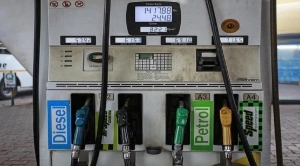04 Nov , 2022 By : Monika Singh

Emission standards came to the purpose to check air pollution caused by vehicles around the world and these norms aim to ensure that more efficient engines arrive with less emissions and, eventually, a better environment, All countries, have largely the same, but their own emission standards and just like that India, too, has its own Bharat Stage Emission Standards based on the EURO emission standards.
Two decades ago, in 2000, India introduced Bharat Stage Emission Standards (BSES) to regulate the output of air pollutants from engines was established by the CPCB (Central pollution Control Board) under the Ministry of Environment & Forests and climate change. Largely based on the European standards and get progressively stringent. These norms require carmakers to produce engines that pass the emission test laid out by BSES, while oil companies are expected to refine fuel to ensure lower sulphur content.In 2016, the Indian government announced that instead of stepping to BS5 they would directly start with BS6 emission norms from 2020 to measure the alarming rate of pollution, Let’s take a look at what is the difference.
BS4
BS4 norms were enforced in 2017 and were stricter than the previous BS3 norms and as per reports, it led to reduction of sulphur content and nitrogen oxide, hydrocarbons and particulate matter in fuel. As per BS4 norms, pollutants from petrol-powered passenger vehicles were restricted to a Carbon Monoxide emission of 1.0 g/km and Hydrocarbons and Nitrogen Oxides discharge of 0.18 g/km, and respirable suspended particulate matter discharge of 0.025.
BS6
On the other hand, BS6 sets the maximum permissible limit of Nitrogen Oxides (NOx) emissions from a petrol vehicle at 60mg per km whereas as per BS4 norms, it was 80mg per km.
The PM limit is set at less than 4.5 mg per km for petrol vehicles whereas for diesel fuel vehicles, limits on NOx emissions is set at 80 mg per km under BS6 standards. Comparatively, BS4 norms had specified the same upper limit at 250 mg per km.
For diesel vehicles, BS6 norms cap hydrocarbon NOx emissions at 170 mg per km, much lower than the 300 mg per kg set under BS4 norms.
The PM limit has been capped at 4.5 mg per km for both diesel and petrol vehicles which was previously set at 25 mg per km for diesel vehicles under BS4 standards.
As we can clearly make out that there’s a drop in the permissible level of exhaust gases and as per reports, BS6 diesel emits as much as 82% less particulate matter versus BS6 diesel. Diesel NOx emissions are also reduced by a good 68% and this narrows the gap between pollution levels caused by diesel and petrol engines which results in a great move!
0 Comment